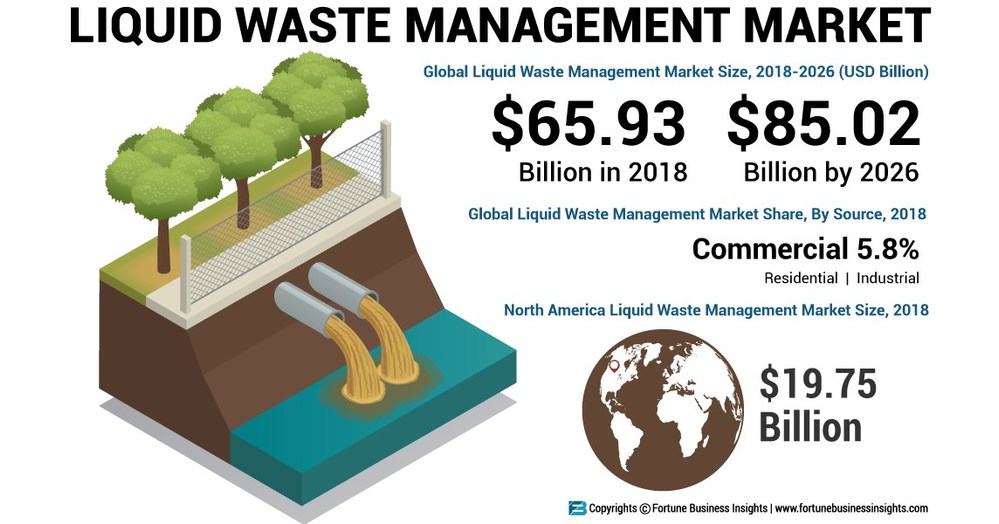What Does Reclaim Waste Do?
What Does Reclaim Waste Do?
Blog Article
About Reclaim Waste
Table of ContentsReclaim Waste for DummiesThings about Reclaim WasteTop Guidelines Of Reclaim WasteThe 25-Second Trick For Reclaim Waste4 Simple Techniques For Reclaim Waste
Discover the kinds, occurrences, and kinds of fluid waste. Domestic sewer waste refers to the waste and items from a household septic system. This type of waste is created by people in houses, schools, and various other structures. This only includes sewage-disposal tanks that have a drain area. The appropriate monitoring and disposal of domestic sewer waste require fluid waste to be moved to a sewer treatment plant where the correct techniques and tools are related to detoxify and dispose of waste.
Business waste often includes possible hazards, such as flammable products or a mixture of liquid and strong waste items, and requires a much more innovative and comprehensive disposal process. The disposal of business waste typically includes the purification of waste prior to transport to guarantee safe and appropriate disposal. Hazardous waste is developed from byproducts and runoff of industrial processes and manufacturing.
This sort of waste can not make use of the same sewage management transportation or processes as septic or industrial liquids. The hazardous waste administration procedure calls for the examination and screening of liquid waste before it goes through the disposal process (liquid waste disposal). Overflow waste is the fluid waste that comes from overflow and excess stormwater in extremely inhabited areas or cities
Overflow waste can trigger contamination and flooding if not dealt with properly. Ensuring correct waste administration can prevent calamities and lower environmental harm.
The Buzz on Reclaim Waste
Call PROS Services today to discover our waste monitoring and disposal services and the appropriate methods to care for the fluid waste you generate.
(https://slides.com/reclaimwaste1)Do you know what takes place to your water when you disengage, flush the commode or drain the cleaning maker? No? Well, it's worth recognizing. This so-called 'wastewater' is not just a crucial resource yet, after treatment, will be launched to our land, waterways or the sea. Used water from commodes, showers, baths, cooking area sinks, laundries and commercial processes is called wastewater.

water utilized to cool equipment or tidy plant and tools). Stormwater, a type of wastewater, is drainage that streams from farming and urban areas such as roofing systems, parks, gardens, roadways, courses and rain gutters right into stormwater drains, after rain. Stormwater moves without treatment straight to local creeks or rivers, ultimately getting to the ocean.
Top Guidelines Of Reclaim Waste
In Queensland, most wastewater is dealt with at sewer therapy plants. Wastewater is transported from domestic or commercial sites through a system of sewers and pump stations, recognized as sewage reticulation, to a sewer treatment plant.
The Department of Natural Resources advises city governments concerning handling, operating and preserving sewerage systems and therapy plants. In unsewered locations, city governments may require householders to install specific or family sewer treatment systems to treat domestic wastewater from bathrooms, cooking areas, shower rooms and laundries. The Department of Natural Resources authorizes the usage of home systems when they are proven to be reliable.
In some brand-new class, treatment of some stormwater to remove clutter, sand and gravel has actually begun utilizing gross pollutant catches. Wastewater therapy happens in 4 stages: Gets rid of solid matter.
Wastewater then streams right into directory big containers where solids work out and are gotten rid of as sludge. Grease and scum are skimmed from the surface area. Uses small living microorganisms called micro-organisms to damage down and remove staying liquified wastes and fine fragments. Micro-organisms and wastes are incorporated in the sludge. Eliminates nitrogen and phosphorus nutrients that can cause algal flowers in our waterways and endanger marine life.
Reclaim Waste for Beginners
Nutrient elimination is not offered in all sewer therapy plants since it needs costly specialist devices. It is ending up being a lot more typical in Queensland. Clear liquid effluent produced after treatment might still contain disease-causing micro-organisms. If this effluent is released right into rivers such as rivers or the sea, the micro-organisms will at some point pass away out.

This normally indicates wastewater needs to be treated or impurities eliminated before it can be released to rivers. Many wastewater flows right into the sewage system. Under the Act, city governments provide approvals and permits for eco appropriate activities (Periods) including wastewater releases that could have a regional impact. The division administers authorizations and licences to Periods including wastewater releases that may have a regional or statewide effect.
The Facts About Reclaim Waste Revealed
Monitoring offers accurate information regarding water high quality and can validate that permit conditions are being satisfied. The info acquired with tracking offers the basis for making water high quality decisions.
Report this page